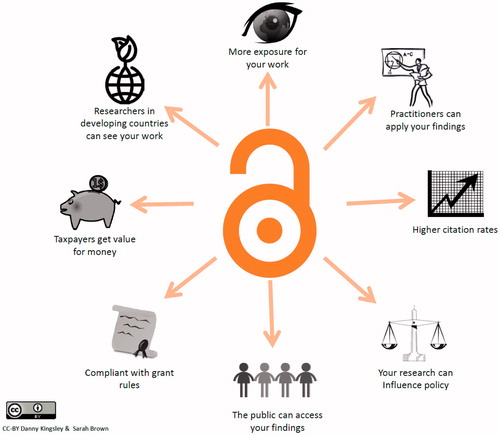Editor’s note: The following article was written by Kevin J. Munro and Peter West, the BSA representatives to the IJA Council, which owns the journal. The article was originally published in Audacity (2016;8:22–23), which is the membership publication of the British Society of Audiology. It is reproduced with permission in this issue of IJA to describe what open access is, and inform readers that IJA is, indeed, an open access journal. Specific details of the levels of open access available to IJA authors are also provided.
R. Roeser
What is open access?
Historically, subscribers to a scientific journal received a hard copy of each issue. More recently, many journals have moved to an online system, which is available to subscribers only. The International Journal of Audiology (IJA) is available online but can only be accessed by subscribers to IJA and members of the organizations that own it: the British Society of Audiology, the International Society of Audiology and the Nordic Society of Audiology. There is now a way for the public to view some IJA articles free of charge online and this is called ‘Open Access’ (OA). The potential benefits of OA are illustrated in .
How does one publish an article using open access?
There are two ways that research studies can be made available via OA:
GOLD OA
This is where the final version of the publication is freely available to the public, via the publishers’ website, immediately on publication.
Publishers normally apply a charge to cover publication costs (typically around £2,000Footnote1 per article) and this is paid by the funder of the researchFootnote2 or, less commonly, by the author.
Currently, around 5–10% of publications in audiology-related journals are available via Gold OA.
GREEN OA
This is where authors self-archive their research study via a repository belonging to, for example, a university or research institute.
Authors do not pay a fee but: (i) the version is usually the authors’ manuscript at the point of acceptance by the editor and before it has not been passed to the publisher for the final steps of publication, and (ii) there is a publisher embargo period, typically around 12 months from the date of first online publication for subscribers.
What model of OA is used by the International Journal of Audiology?
As of April 2016, the International Journal of Audiology has implemented a hybrid model of publication. This is where subscribers continue to have access to the online journal but some articles will also be available to the public via OA, either immediate/Gold OA or after a 12-month embargo period for Green OA. At least initially, it is anticipated that around 10% of articles will be available via Gold OA because this is typical of current audiology-related journals.
Most of the major grant-awarding bodies make it a condition of the award that the research output is made available via OA. Some funders specify that this must be Gold OA while others allow Green OA. The policy of the Medical Research Council is that all publications must be made available to the public via OA, either immediate Gold OA or Green OA, the latter with an embargo period no longer than 6 months.Footnote3 The policy of the National Institute for Health Research is that the main research output from a funded study must be made available to the public using Gold OA and that all research output must be deposited in Europe PMC, a discipline-specific repository, within six months of publication. For comparison, the US National Institutes of Health require that all final peer-reviewed journal manuscripts that arise from NIH funds are submitted to PubMed Central immediately upon acceptance for publication (immediate Green OA).
What are the implications for the research excellence framework?
The Research Excellence Framework (REF; formerly known as the Research Assessment Exercise) is a method of assessing the research of UK higher education institutions. The REF is very important for universities and academics because the results determine how much research funding they are granted: a poor performance can close a department while a top rating means steady funding. To be eligible for assessment in the next REF, all publications will need to be OA with deposit in a repository within 3 months and an embargo period of no more than 12 months. While a BSA member who undertakes self-funded research does not need to use OA, they would not be able to enter their publication into the REF.
Notes
Notes
1. The current fee for IJA is £1,788 (exc tax) but BSA members receive a 25% discount.
2. Research Councils UK (RCUK; a Government body that manages the strategic partnership between the seven individual UK research councils) allocate a block grant to institutions to provide for the costs of Gold OA. Other funders allow for the publication fee to be included in the grant costs.
3. Since IJA has an embargo period of 12 months, this journal will not satisfy the Green OA policy of the Medical Research Council.

